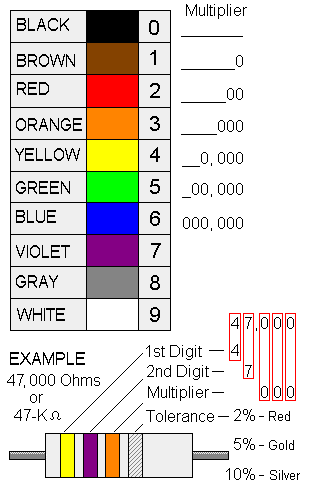Wow, Chris... didn't get your coffee this morning?
I don't know the
resistor color code off the top of my head. And while it's an international standard for resistors, that has nothing to do with cable lengths. I've never seen it used for cables...not from any rental shop...not in any
venue. Not much of a standard then, is it?
And, the OP is in a school. I'll venture to say that most of the students don't know WHAT a
resistor color code is, let alone know it 'off the top of their heads.'
--Sean
Coffee has nothing to do with it. I get passionate about cabling because it's what I earn money doing... It's also a post written mid afternoon...
We agree that it's an international standard for resistors. It is also therefore a standard for colour representation of 0 - 9. How many others of that are there?
As to usage, there are multiple companies doing it here; it is the standard used by Oceania's largest audio company amongst others. Have a look at a piece of Canare
multicore. You'll find it's internal cores are using
resistor colour code for identification. Canare make cable in each of the ten colours. The ten are also the spectrum of available boots for
Neutrik connectors.
In some ways you are defeating your own arguement - there is no commonality of standard across companies.
Does it matter if a kid later finds out that the colour code he's learnt for cable lengths also happens to be the colour code for resistors? No. Take the lesson from the saying, I like standards, there's so many to choose from.
You won't change an industry overnight, but if we start the push to a standardised method of labelling thropugh pockets in schools, then perhaps those young technicians will go on to institue a common scheme in companies they set up or take up employment with. Then slowly we can get to a situation where it does make sense.
Sure someone could come up with a scheme that works for their defined length options. But it won't translate to a different company with different standard inventory and then you have to learn a different code.
There is no
point reinventing the wheel on a colour code. The
resistor one is there, all the service techs out there know it and most companies of decent size have a tech on staff if all else fails.
And like I said, put the length on in numbers as well as colours, it means a] that people who don't know the code don't have to learn it, they can look at it and know straight away how long the cable is and b] that they'll start to
pick up the code and in doing so increase their operational efficiency.
I'm sorry that my response has put you off kilter, but I get very sick and tired of the underlying attitude across this industry of anything goes. Working with standards allows anyone to
walk in and be able to service and
play nice with your gear. Think about how long it's taken to finally
settle on pin 2 hot...
Oh and colour code should also be used on
multicore tails, it makes it SO much faster to patch when you need only look for colour rather than finicking around rotating cable to read the numbers...



